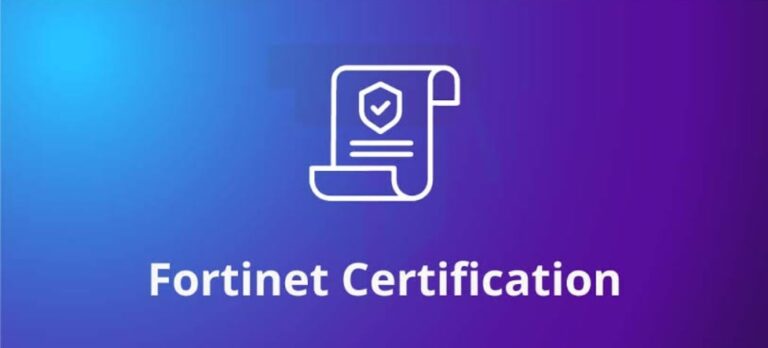Mastering Information Overload: How Summarizer Tools Can Streamline Your Reading Experience
Asenqua Tech is reader-supported. When you buy through links on our site, we may earn an affiliate commission.
In today’s fast-paced world, where information is abundant and readily accessible, the ability to efficiently manage and digest vast amounts of data has become increasingly crucial. Whether you’re a student trying to keep up with academic readings, a professional staying informed about industry trends, or simply a curious individual seeking knowledge, the sheer volume of information available can often feel overwhelming. Fortunately, advancements in technology have provided us with powerful tools to help us navigate this information overload more effectively. One such tool that has gained popularity in recent years is the summarizer tool.
What are Summarizer Tools?
Summarizer tools are software applications or online services designed to condense lengthy texts into shorter, more manageable versions. These tools leverage artificial intelligence and natural language processing algorithms to analyze the content of a document and extract the most relevant information, presenting it in a concise and coherent format. By summarizing complex texts into bite-sized chunks, these tools enable users to quickly grasp the key points without having to read through the entire document.
How Do Summarizer Tools Work?
The underlying mechanism behind summarizer tools involves a combination of advanced algorithms and linguistic analysis. When a user inputs a piece of text into the tool, whether it’s an article, research paper, or any other document, the tool first breaks down the text into its constituent parts, such as sentences, paragraphs, and sections. It then applies various techniques, such as text clustering, keyword extraction, and semantic analysis, to identify the main ideas, key concepts, and supporting details within the text.
Once the relevant information has been identified, the tool generates a summary by selecting and rephrasing the most important sentences and phrases from the original text. The goal is to retain the essence and meaning of the original content while presenting it in a more concise and digestible form. Depending on the specific algorithm used by the tool, the resulting summary may vary in length and style, but the overall objective remains the same: to provide users with a condensed version of the text that captures its essential points.
Benefits of Using Summarizer Tools
Save Time
One of the most significant advantages of using summarizer tools is the time-saving aspect. In today’s fast-paced world, time is a precious commodity, and the ability to quickly extract relevant information from lengthy texts can be invaluable. Instead of spending hours reading through lengthy articles or reports, users can generate summaries in a matter of minutes, allowing them to focus their time and attention on other tasks.
Enhance Comprehension
By condensing complex texts into shorter summaries, summarizer tools make information more accessible and easier to understand. Whether you’re a student trying to grasp difficult concepts or a professional seeking to stay informed about industry developments, these tools can help you digest information more effectively. By presenting the key points in a clear and concise manner, summarizer tools facilitate better comprehension and retention of the material.
Increase Productivity
In addition to saving time and enhancing comprehension, summarizer tools can also increase productivity by streamlining the process of information consumption. Instead of getting bogged down in the details of lengthy texts, users can quickly extract the essential points and move on to the next task. This not only improves efficiency but also allows users to cover more ground in less time, thereby boosting overall productivity.
Choosing the Right Summarizer Tool
With a wide range of summarizer tools available on the market, choosing the right one for your needs can be a daunting task. Here are some factors to consider when selecting a summarizer tool:
Accuracy
One of the most important considerations when choosing a summarizer tool is its accuracy. A good summarizer tool should be able to generate summaries that accurately capture the main ideas and key points of the original text. Look for tools that have been rigorously tested and proven to produce accurate results across a wide range of texts and topics.
Customization Options
Another factor to consider is the level of customization offered by the tool. Some summarizer tools allow users to adjust various parameters, such as the length of the summary or the level of detail included. This can be useful for tailoring the summary to suit your specific needs and preferences.
Integration
If you frequently work with other software or platforms, you may want to choose a summarizer tool that integrates seamlessly with your existing tools. Look for tools that offer compatibility with popular productivity apps, document management systems, and web browsers, as this can streamline your workflow and make it easier to incorporate summarization into your daily routine.
Tips for Maximizing the Effectiveness of Summarizer Tools
While summarizer tools can be incredibly useful, they are not without their limitations. Here are some tips for maximizing the effectiveness of summarizer tools:
Skim the Original Text First
Before generating a summary, take a few moments to skim through the original text to get a general sense of its content and structure. This will help you assess the accuracy and relevance of the summary generated by the tool.
Review and Edit Summaries
Although summarizer tools are designed to produce accurate summaries, they are not infallible. Take the time to review and edit the summary generated by the tool to ensure that it accurately reflects the content of the original text. Look for any errors or inaccuracies and make any necessary revisions to improve the quality of the summary.
Practice Regularly
Like any skill, summarization takes practice. The more you use summarizer tools, the better you will become at quickly extracting key information and generating concise summaries. Try to incorporate summarization into your daily routine, whether it’s summarizing articles, reports, or emails, to hone your summarization skills over time.
Conclusion
In conclusion, summarizer tools are powerful tools that can help individuals master the challenge of information overload in today’s digital age. By leveraging advanced algorithms and linguistic analysis, these tools enable users to quickly extract key information from lengthy texts and generate concise summaries that capture the essence of the original content. Whether you’re a student, a professional, or simply a curious individual seeking knowledge, summarizer tools can streamline your reading experience, enhance your comprehension, and increase your productivity. So why drown in a sea of information when you can ride the waves with ease?
Table of Contents
| Sr# | Headings |
| 1 | What are Summarizer Tools? |
| 2 | How Do Summarizer Tools Work? |
| 3 | Benefits of Using Summarizer Tools |
| 4 | – Save Time |
| 5 | – Enhance Comprehension |
| 6 | – Increase Productivity |
| 7 | Choosing the Right Summarizer Tool |
| 8 | – Accuracy |
| 9 | – Customization Options |
| 10 | – Integration |
| 11 | Tips for Maximizing the Effectiveness of Summarizer Tools |
| 12 | – Skim the Original Text First |
| 13 | – Review and Edit Summaries |
| 14 | – Practice Regularly |
| 15 | Conclusion |
FAQs (Frequently Asked Questions)
1. How accurate are summarizer tools in condensing information?
Summarizer tools can be highly accurate, especially when trained on large datasets and equipped with advanced algorithms. However, it’s essential to review and edit the generated summaries to ensure accuracy.
2. Can summarizer tools handle technical or specialized content?
Yes, many summarizer tools are capable of handling technical or specialized content by analyzing the text for key terms and concepts. Some tools even allow for customization to focus on specific domains or topics.
3. Are summarizer tools suitable for academic purposes?
Summarizer tools can be valuable aids for students and researchers, helping them quickly extract key information from scholarly articles, research papers, and textbooks. However, it’s essential to verify the accuracy and relevance of the summaries for academic use.
4. Do summarizer tools work for all languages?
While many summarizer tools support multiple languages, the accuracy and effectiveness may vary depending on the language and complexity of the text. It’s recommended to choose a tool specifically designed for the language you’re working with.
5. Can summarizer tools be used for summarizing audio or video content?
Some advanced summarizer tools offer features for processing audio or video content, such as transcribing spoken words and generating text summaries. However, the effectiveness may depend on the quality of the audio/video and the capabilities of the tool.







